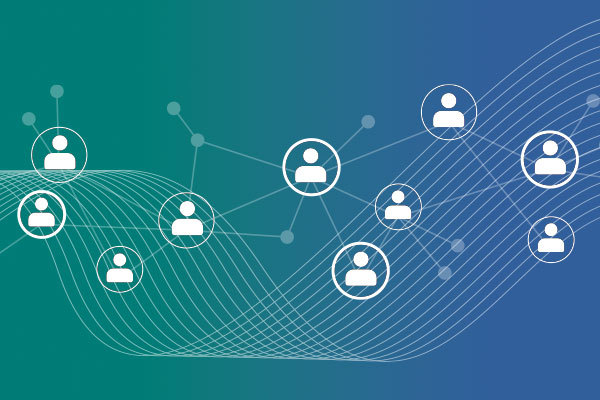Talking Tariffs - Pricing Strategies to Hold the Line on Margin
By Brooks Hamilton
Jan 07, 2020
Table of Contents
In the U.S., another round of tariffs was announced on imports from Argentina and Brazil, building upon the substantial tariffs imposed on Chinese imports in August and a looming $300 billion tariff action proposed for January 2020. The ripple effects are being felt by manufacturers, whose costs are rising for certain inputs, and distributors, who are paying higher prices to their suppliers and having to pass that cost on to their customers. In Part 3 of our Talking Tariffs series, we answer the question: “How can I respond to tariffs from a pricing perspective to protect margins without losing volume?” Click here for Part 1. Part 2.
In this blog series, we’ve discussed the types of companies most heavily affected by tariff actions, and the administrative burden and margin leakage they tend to cause. We reviewed how tariffs move through the supply chain as well as some of the options companies have when dealing with rising costs due to tariffs. Now we get down to business: What can pricing professionals do right now to preserve margin, maintain volume and remain compliant with audit requirements? The following recommendations have been developed through first-hand experience with B2B customers dealing with tariffs in the manufacturing and distribution industries.
More IntentionalCost Pass-Through= More Profit
Higher tariffs equate to higher costs, and in a perfect world,you could pass 100 percent of every cost increase on to your customers. However, yourcompetitive situation and the price elasticity of different segments may mean you can’t do that in every case. You may also be able to pass on more than 100 percent in some segments where sensitivity is low.
This means you must first be able to identify price sensitivity and then have the tools and process in place to execute price changes quickly on a mass scale.
Pricing professionals should consider flexible price management solutions that empower them to set up category-specific and customer segment-specific cost pass through strategies. In this tool, prices at any level in the product hierarchy can be updated quickly in a central location and pushed out to quoting tools with transparency, so price changes can easily be calculated, tracked and communicated. For the pricing team, rather than toiling in spreadsheets to track the latest product additions and exclusions to the Harmonized Tariff Schedule (an arduous task fraught with potential costly mistakes), a central price management tool simplifies your to-do list.
The right tools eliminate guesswork and give the pricing department the ability to capture more margin and manage costs in any environment. When unpredictable tariff actions disrupt the ordinary flow of business and threaten margins, such capabilities are invaluable.
Combat tariffs with a price management tool that provides:
- A central data repository of product data and tariff information, which all appropriate team members can access.
- Clear visibility into how tariffs are applied. This is crucial to be able to explain price changes to others and either change or back out the tariff charge if the tariff action changes.
- The ability to calculate the impact product by product, as well as the overall change automatically.
- Integration with other tools or existing price administration applications.
Communicate an Informed Strategy
It’s more important during times of market disruption than ever to enforce price behavior in the field. This can be achieved through a mix of technology and process improvement. Price optimization can produce market-aligned prices for each selling circumstance that’s presented as a range of prices, giving sales reps room to negotiate. By doing so, pricing teams can offer price guidance that maintains necessary margin levels while preventing a panic-like race to the bottom on price that ultimately erodes margin. Yet even in the most rigorous of pricing departments, there will be times when exceptions need to be made. When these situations arise, it’s imperative to have a deal management solution in place to provide smooth and actionable visibility into override requests.
Your deal management application must be equipped to help teams:
- Understand the impacts of pricing decisions during negotiation on margin and target attainment.
- View price guidance in a quickly evolving price environment.
- Route for approval so sales management can help negotiate the potential customer discussions.
Another weapon against tariffs for the data-driven pricing analyst is a comprehensive visual analytics tool. Most businesses are going to have a range of impacted segments where tariffs are concerned. It’s important to clearly understand the most and least affected segments, then adjust prices intelligently to preserve available volume.
Pick a Trusted Partner
The rest of your daily tasks aren’t going away. Your organization has likely redirected quite a bit of manpower and brainpower to managing tariff administration and strategy. Price departments are stretched thin. It’s unrealistic to accomplish it all on your own.
Similarly, it’s not enough to drop a pricing solution in your team’s lap and expect all the tariff pain to go away. Software is only as effective as its adoption and when it comes to price optimization and management, there is no one-size-fits-all answer. Each industry is unique, as is each company within each industry. Your price optimization supplier needs to be heavily involved beyond implementation.
In addition to bringing the necessary tools to address challenges brought on by tariffs, if you’re considering a pricing and sales technology provider, ensure that the candidates have a deep knowledge of the challenges common to your vertical industry. An ideal partner would arm you with an experienced implementation team and a dedicated customer success team to develop a shared understanding of the impact of tariffs and quantify your potential margin exposure. By proactively engaging in this way, you can be better equipped to tackle the challenge from all angles – including administrative cost, business performance, real-time reporting on margin impact and new price governance.
Now, a Curve Ball – Planning for a Post-Tariff World
This series has gone deep and wide on tariffs’ impact on pricing and costing. It’s important to remember that these tariff actions will end. It’s possible they end as soon as Q1. Fantastic, right? Well, not so fast. If you’re a manufacturer or distributor with tariff-induced headaches, your pain doesn’t stop when they go away. For instance, you may have paid a 25 percent tariff lift to your supplier for products that are still sitting in your inventory when the tariffs ends. How ruthlessly will your customers act with regard to taking that inventory off your hands? Will they want to pay more for a tariff that doesn’t exist? How do you avoid getting stuck with tariff cost-inflated inventory?
We answer these questions and more in our post-tariff preparedness post, available here.
For a deeper discussion on tariff strategies and the right tools to execute with, contact your Customer Success Manager or reach out to us here.



